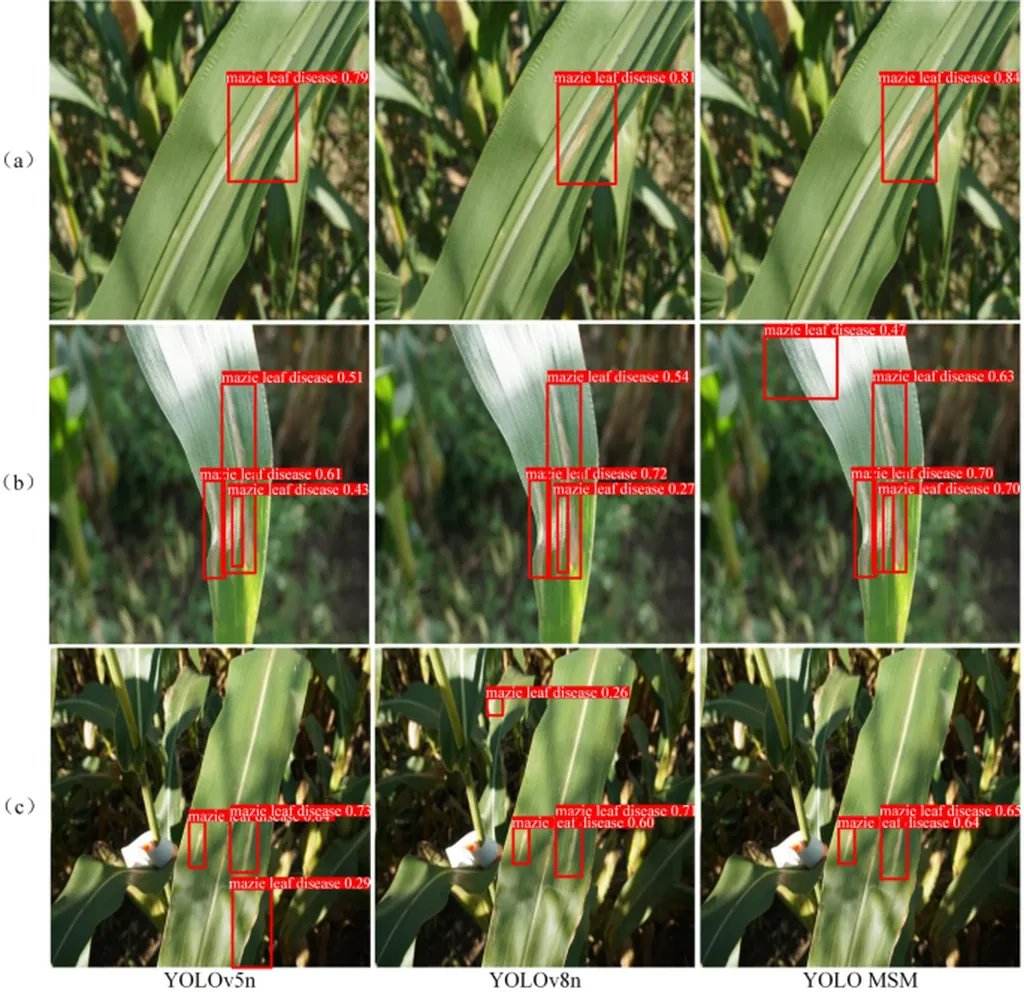In the heart of China’s Hebei province, researchers are tackling a pressing agricultural challenge that could have significant ripple effects across the global energy sector. Shengnan Hao, a leading researcher from the College of Artificial Intelligence at North China University of Science and Technology, has developed a novel model for detecting corn leaf diseases and pests with unprecedented accuracy. This innovation, published in the journal *Applied Sciences* (translated from the original Chinese title), could revolutionize smart agriculture and, by extension, the energy sector’s reliance on biofuels.
Corn, a staple crop worldwide, is not only a vital food source but also a key component in the production of biofuels. Diseases and pests can devastate corn yields, leading to economic losses and potential disruptions in the biofuel supply chain. Traditional methods of detecting these issues are labor-intensive and often ineffective, leaving farmers and agribusinesses vulnerable to crop losses.
Enter BCS_YOLO, a cutting-edge model designed to transform how we monitor and protect corn crops. “Our model integrates multiple attention mechanisms to improve the detection of fine-grained targets, such as small pests or early-stage diseases,” Hao explains. The model’s three key modules—the Self-Perception Coordinated Global Attention (SPCGA) module, the High/Low-Frequency Feature Enhancement (HLFFE) module, and the Local Attention Enhancement (LAE) module—work in tandem to enhance the model’s accuracy and efficiency.
The SPCGA module, for instance, fuses multiple attention mechanisms to improve the model’s ability to perceive fine-grained targets. The HLFFE module adopts a frequency domain separation strategy to strengthen edge delineation and structural detail representation in affected areas. Meanwhile, the LAE module improves the model’s discrimination ability between targets and backgrounds through local importance calculation and intensity adjustment mechanisms.
The results are impressive. BCS_YOLO achieves a precision of 78.4%, recall of 73.7%, an F1 score of 76.0%, and a mean Average Precision at 50% (mAP@50) of 82.0%. These metrics represent significant improvements over the baseline model, YOLOv11n, and other mainstream object detection models.
The implications for the energy sector are substantial. As the world increasingly turns to biofuels as a sustainable energy source, ensuring the health and productivity of corn crops becomes paramount. “By enabling early detection and intervention, our model can help prevent crop losses and stabilize the biofuel supply chain,” Hao notes.
Moreover, the scalability of BCS_YOLO means it can be deployed in various agricultural settings, from small farms to large-scale agribusinesses. This adaptability could drive widespread adoption, further enhancing the resilience of the biofuel industry.
Looking ahead, this research could pave the way for similar models tailored to other crops critical to the energy sector, such as soybeans and sugarcane. As Hao puts it, “Our work is just the beginning. The potential for AI in agriculture is vast, and we are excited to explore further applications.”
In the quest for sustainable energy, innovations like BCS_YOLO highlight the critical role of technology in securing our food and fuel supplies. By harnessing the power of AI, we can create a more resilient and efficient agricultural system, benefiting both farmers and the energy sector alike.

